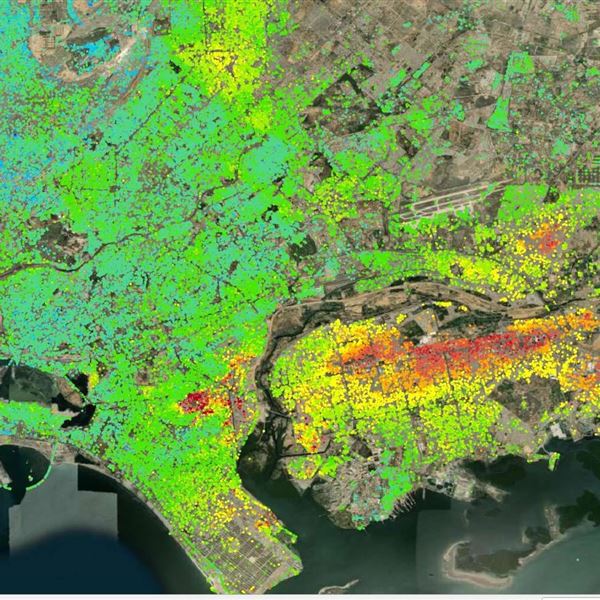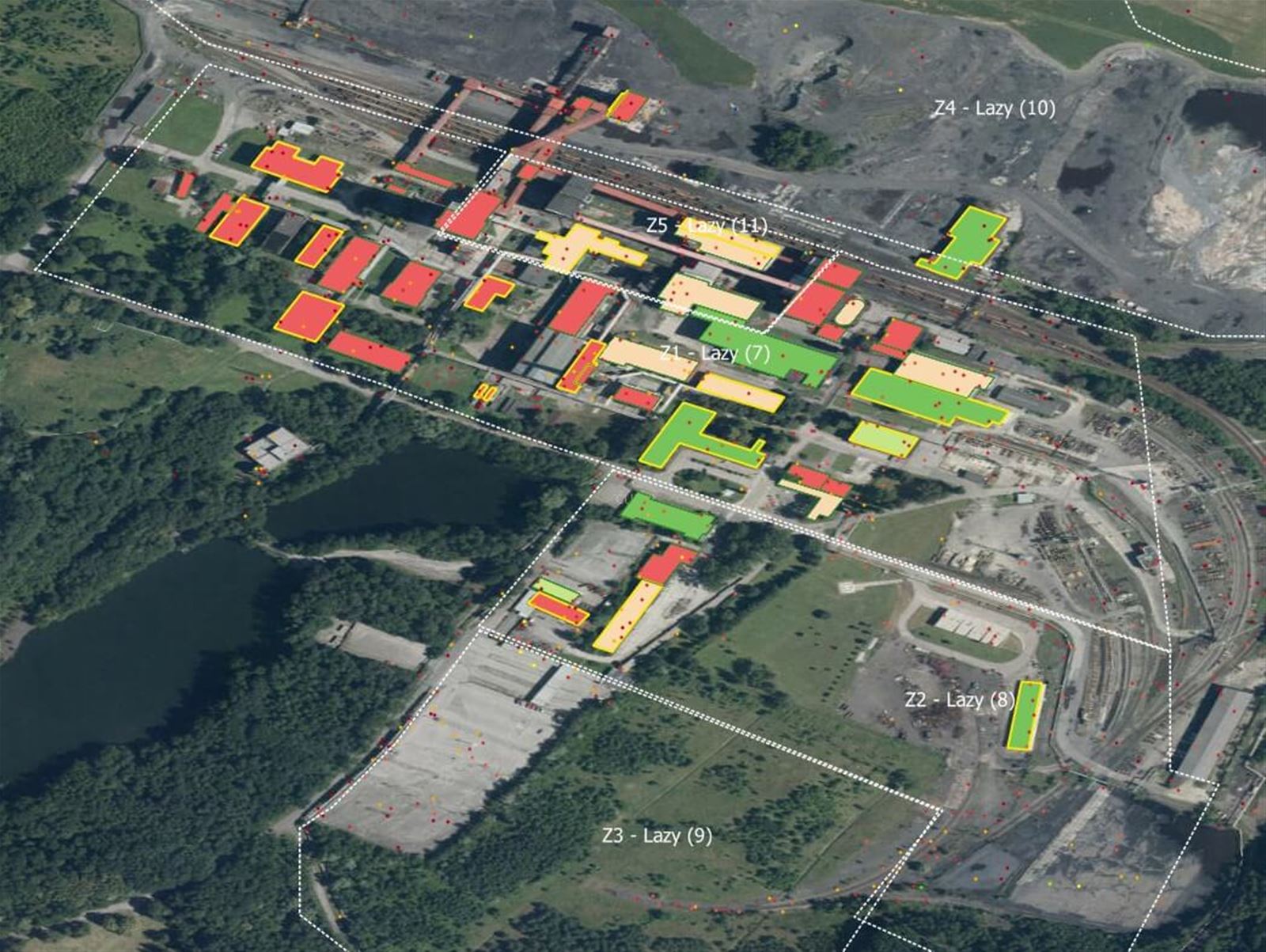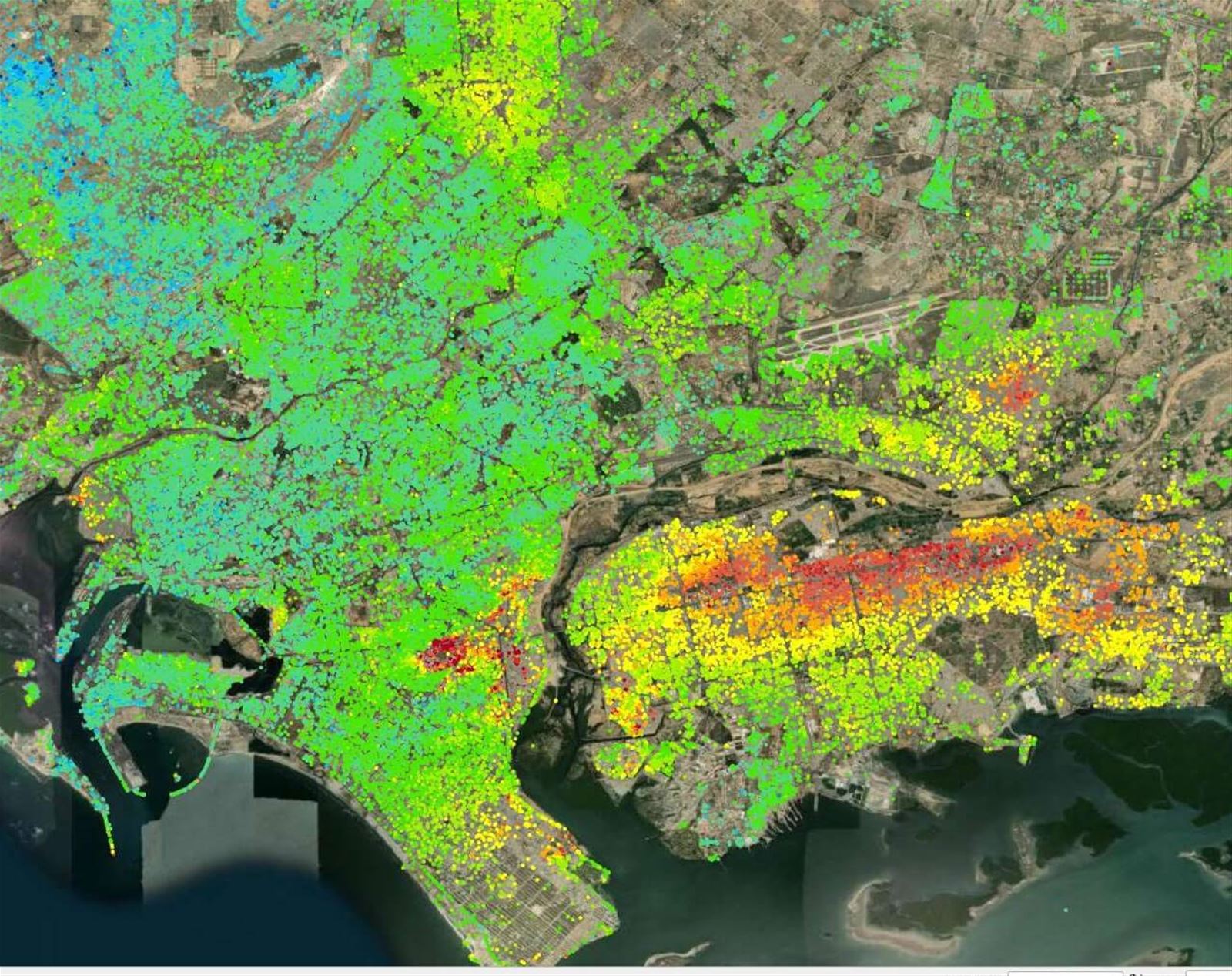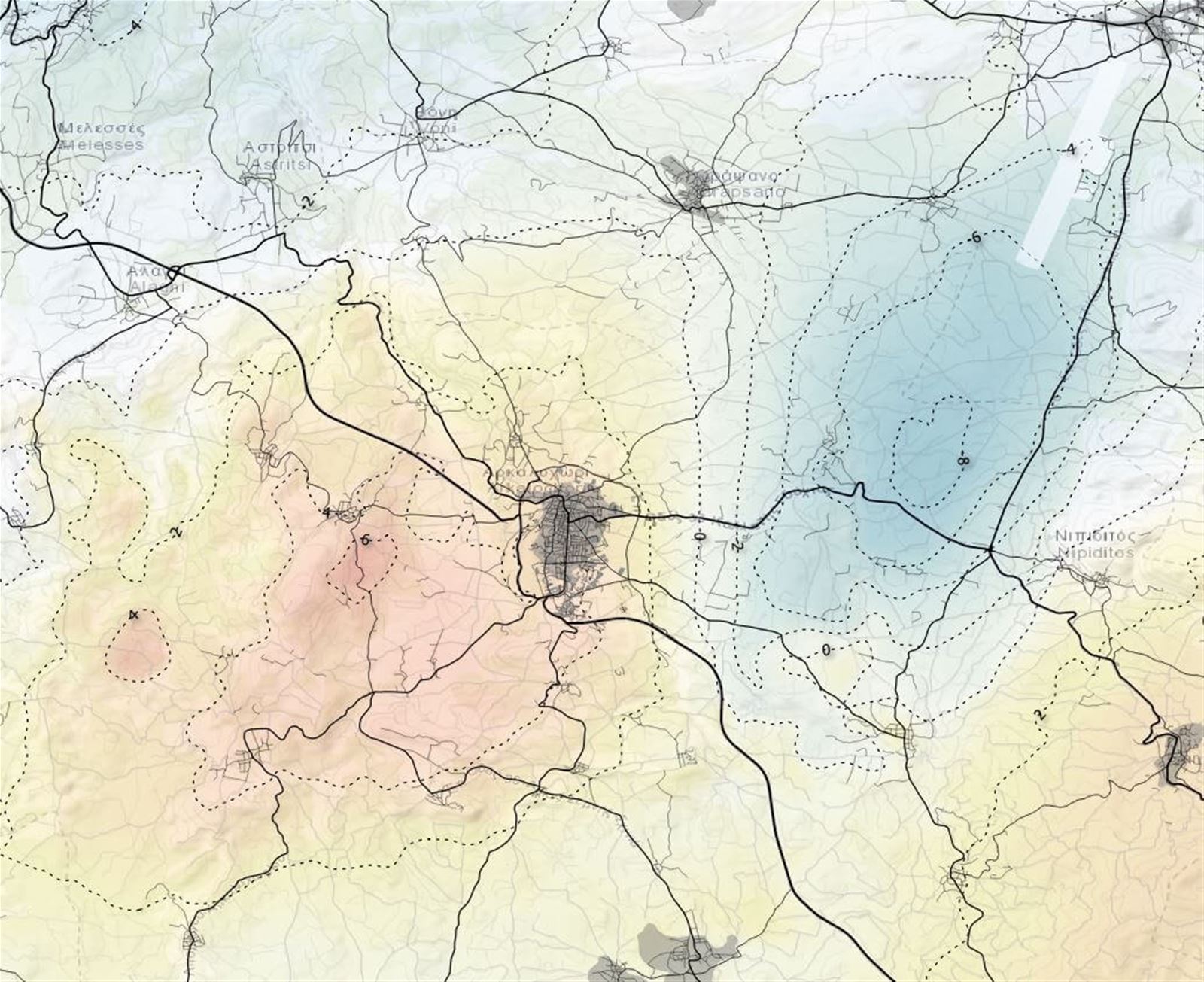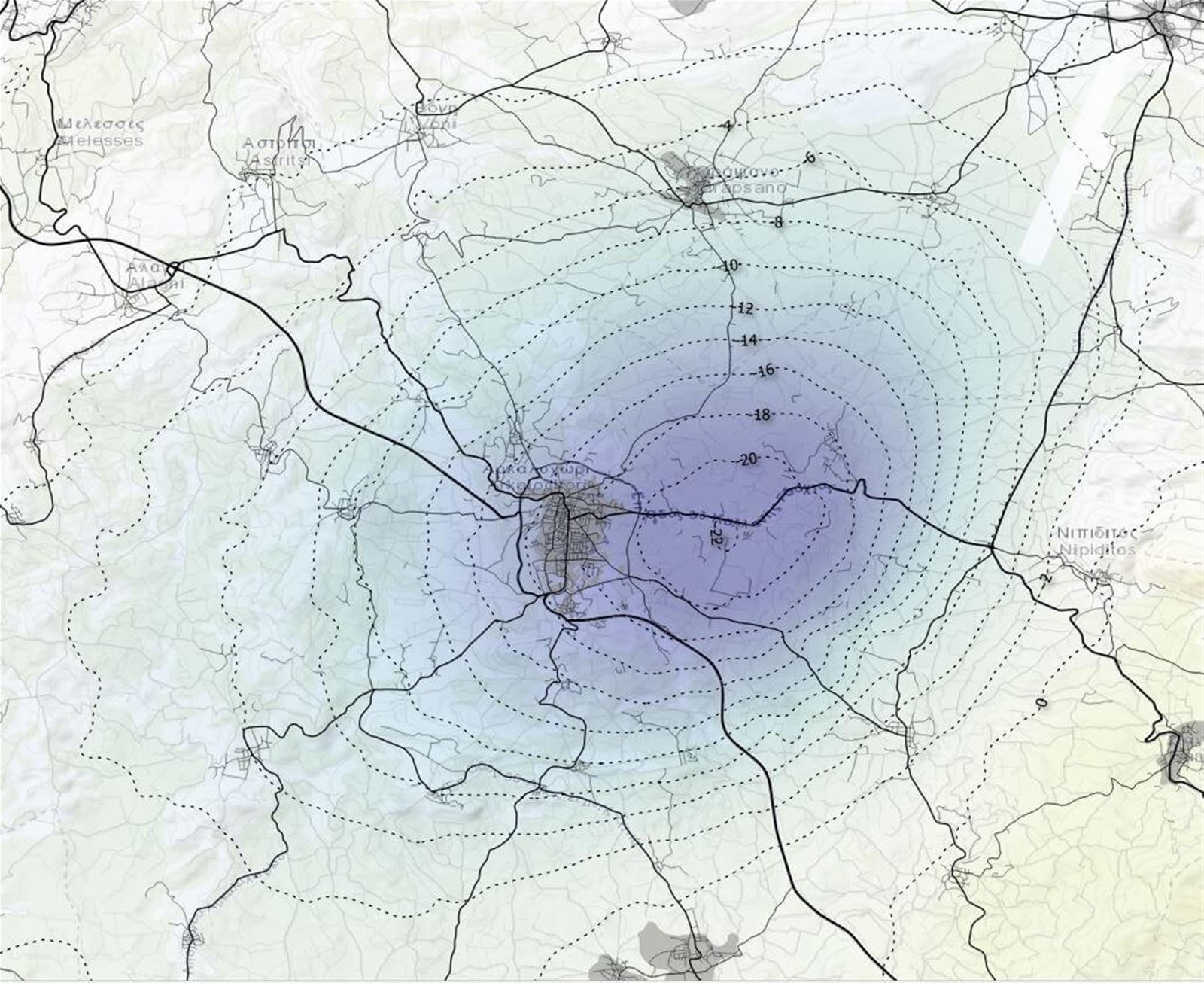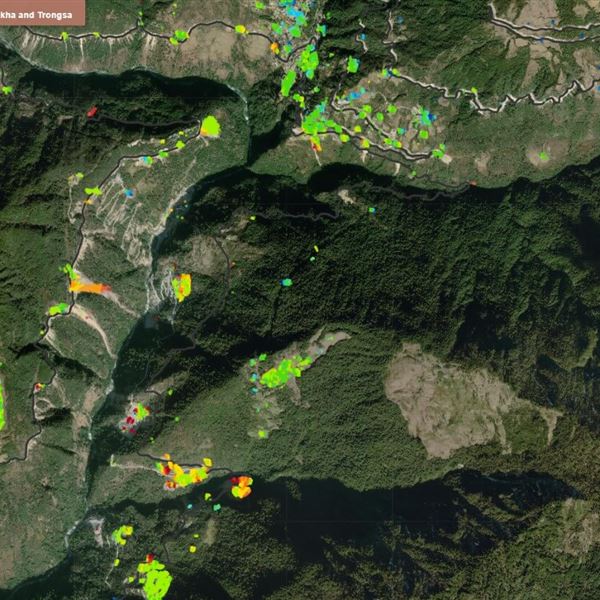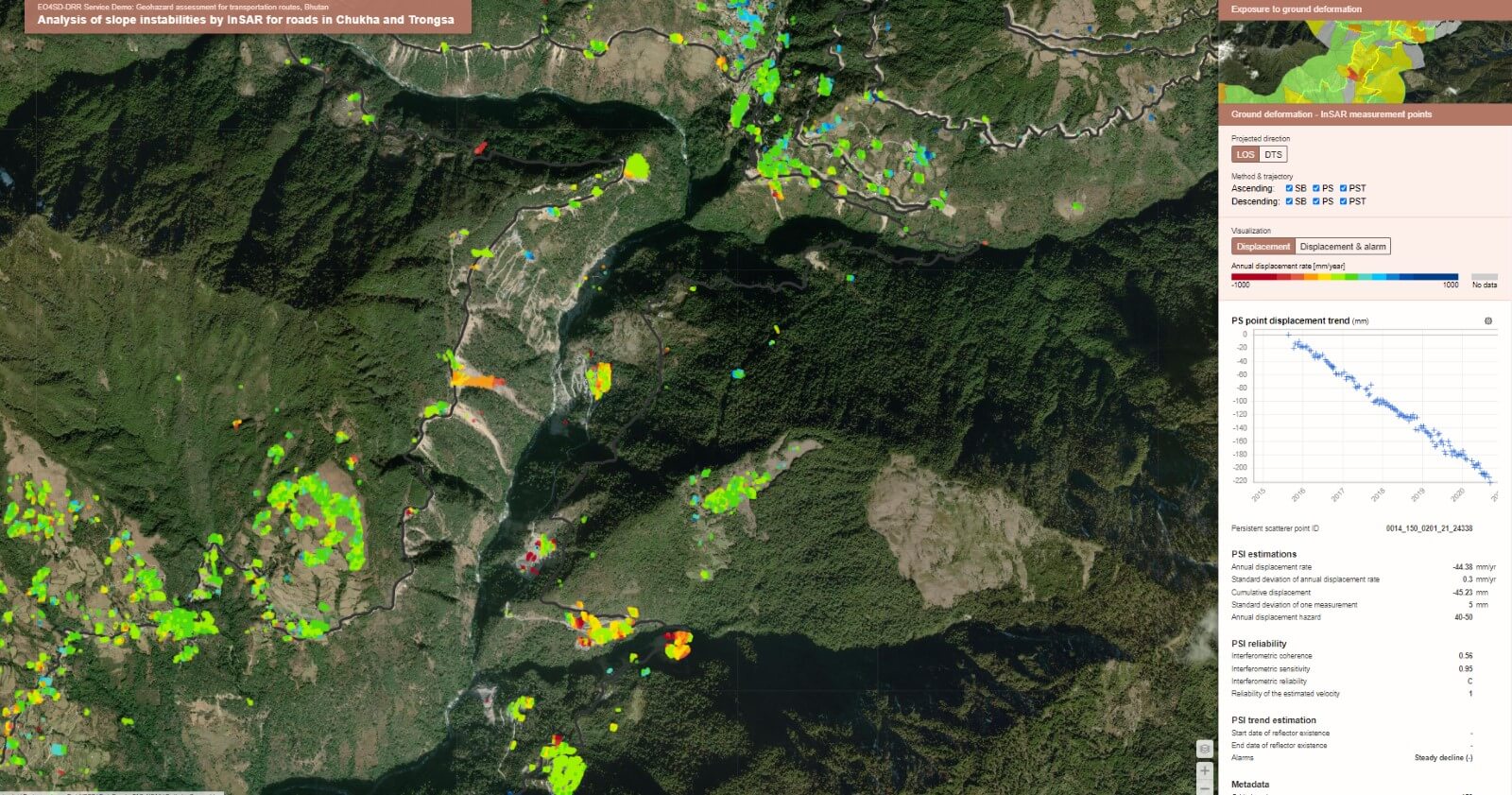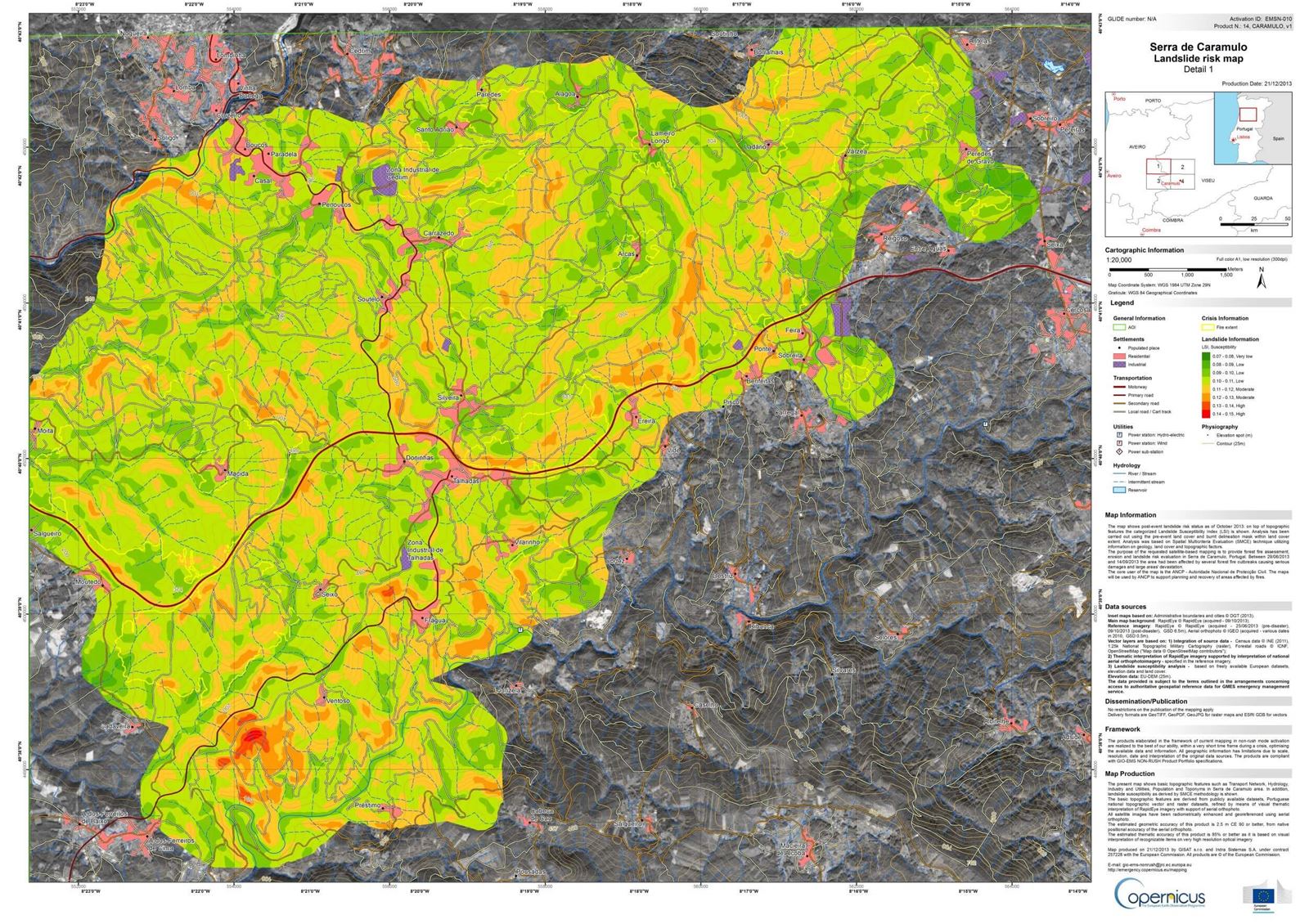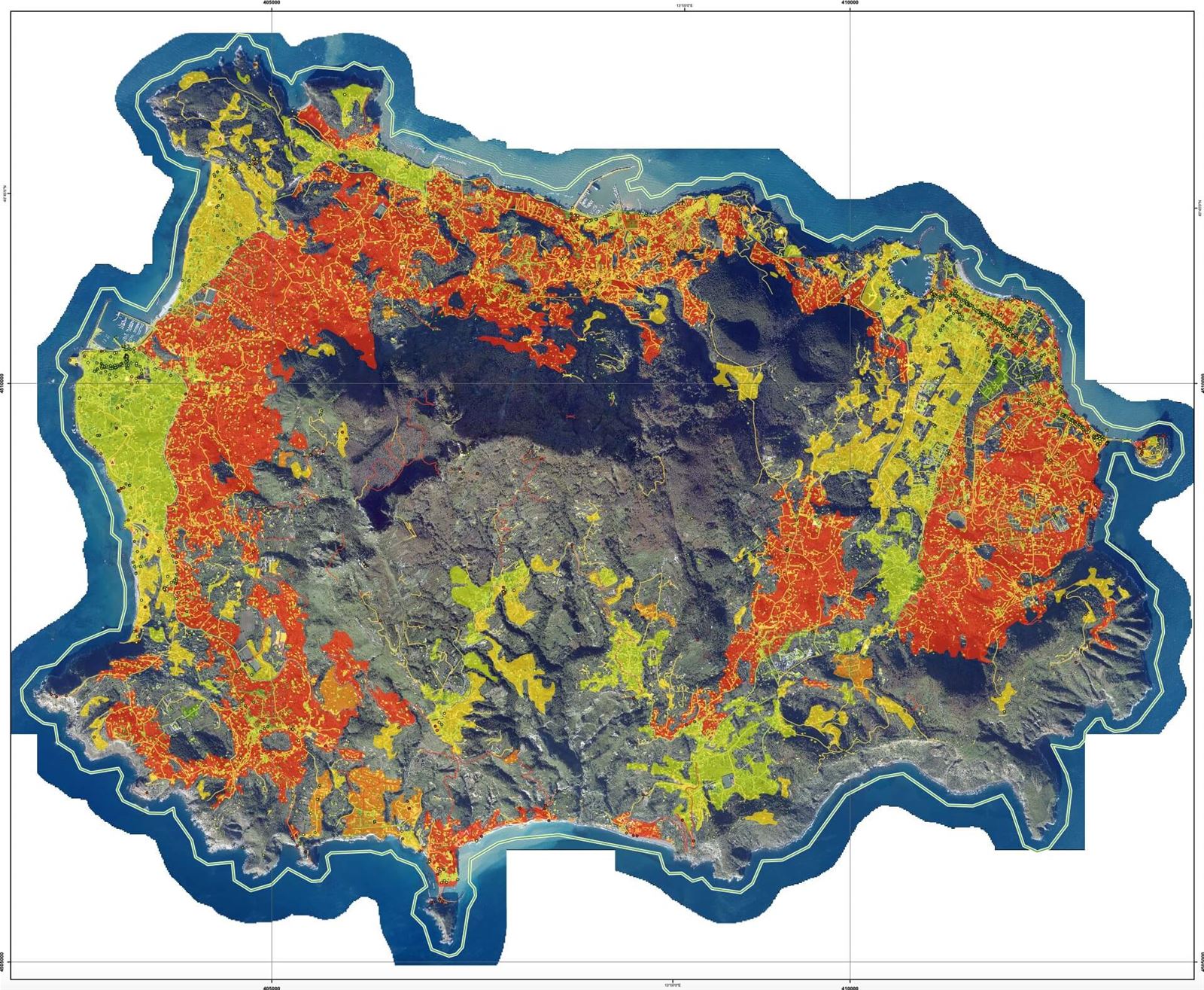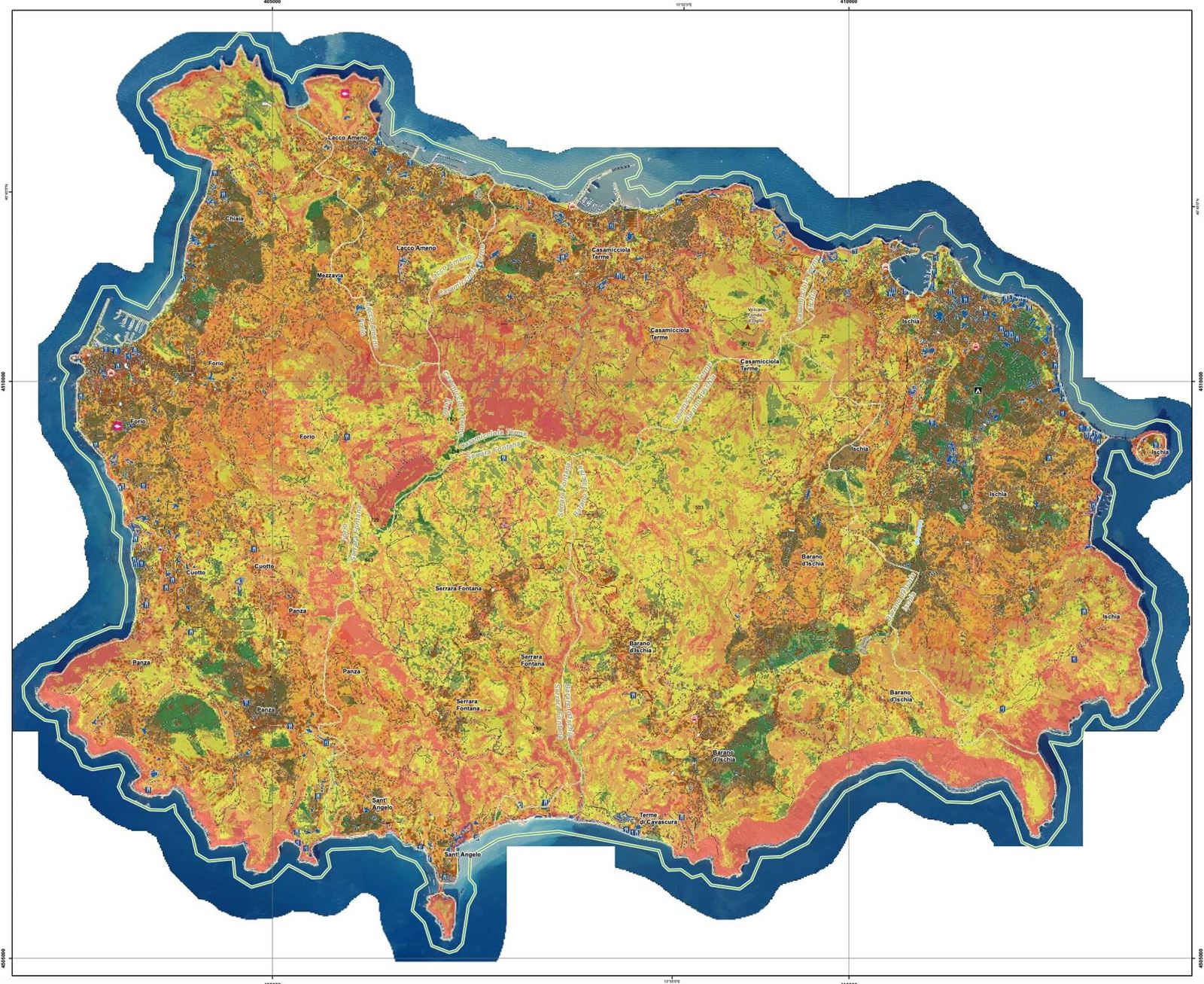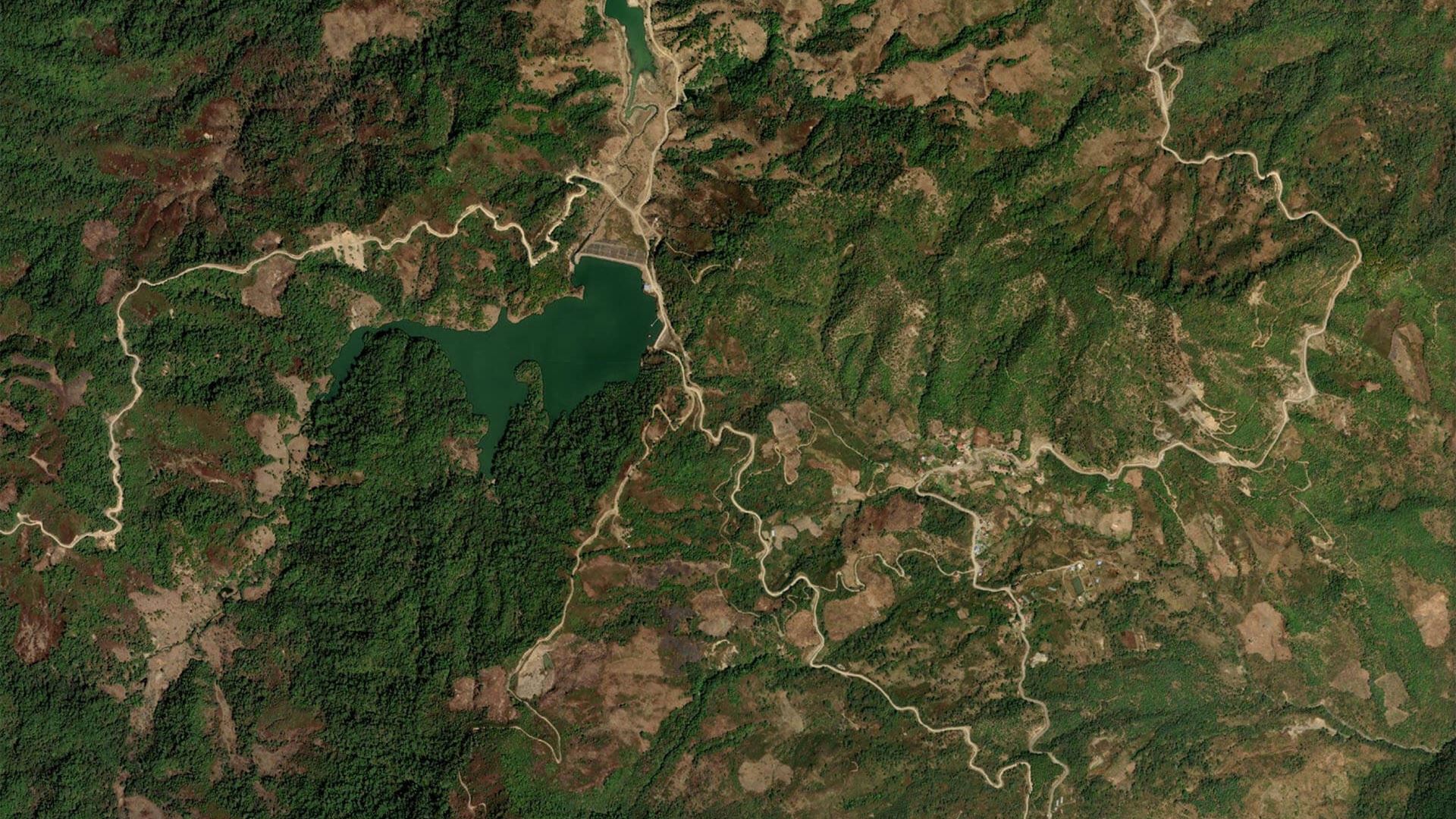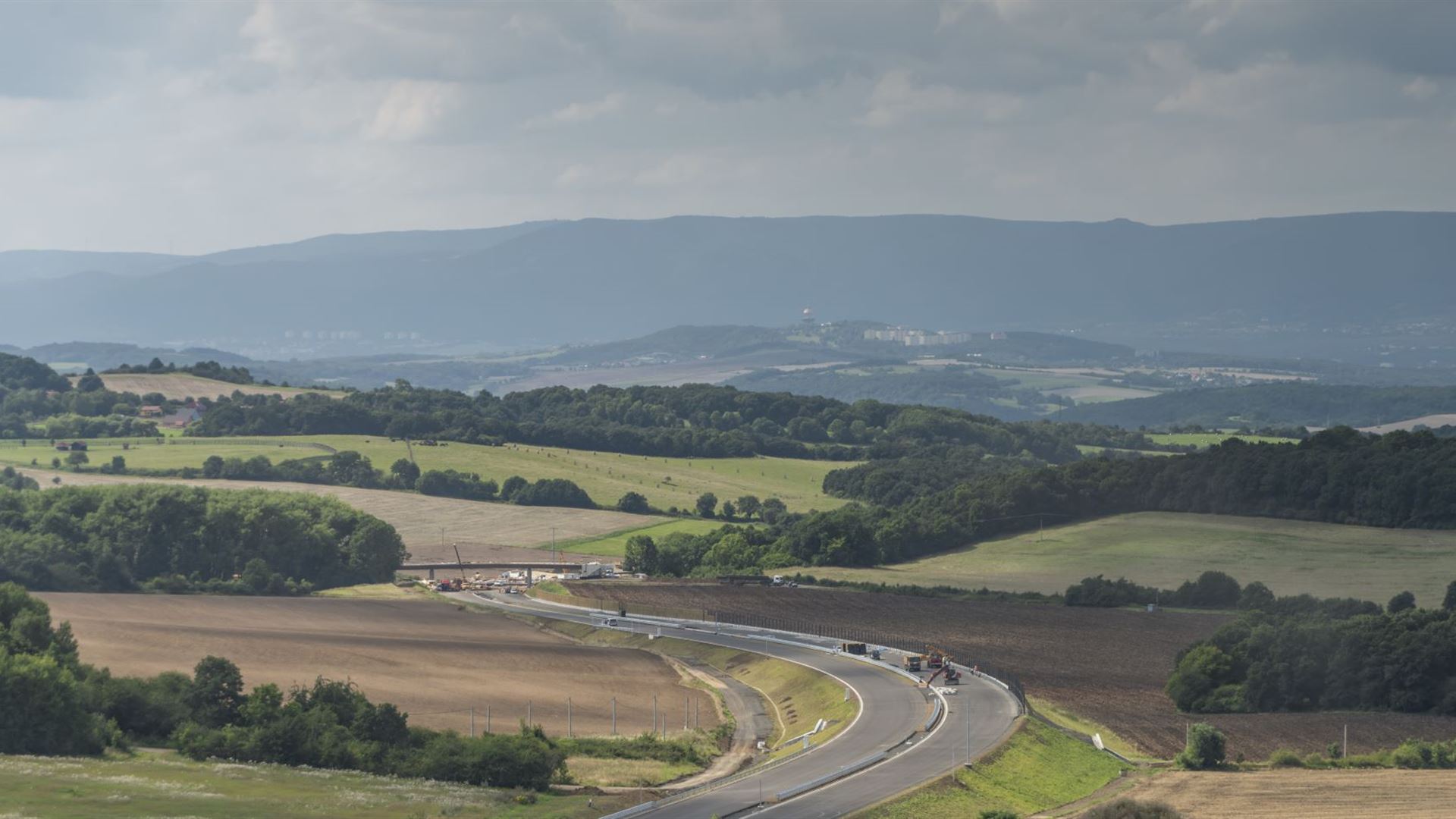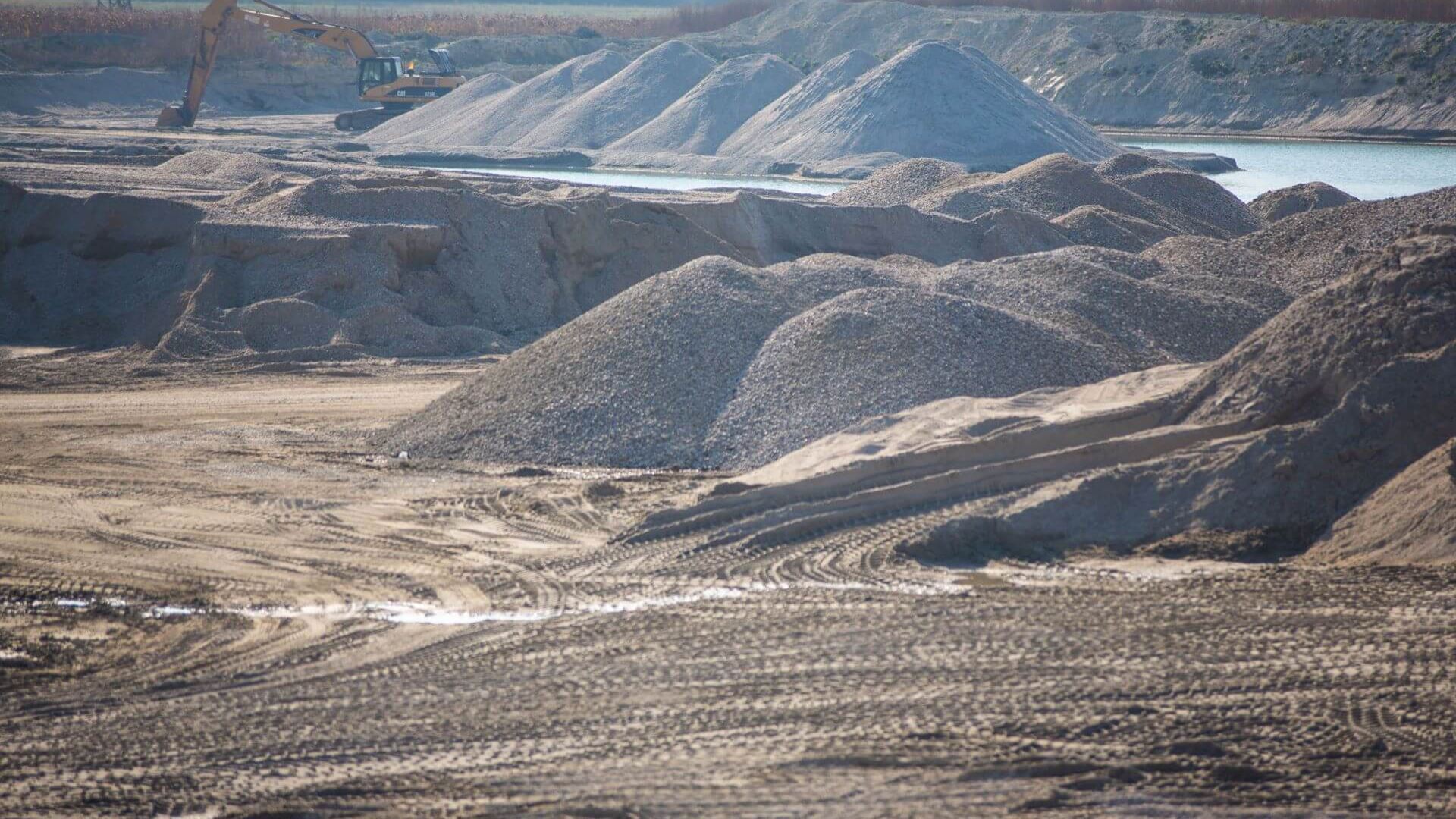- Get up-to-date information on ground subsidence or uplift with millimeter accuracy, scalable and tailored to your needs
- Assess geotechnical risks from terrain deformations and their current and potential impacts during the preparation phase of your project
- Continuously evaluate geotechnical risks and impacts on structural stability during implementation and after project completion
- Leverage our experience in numerous interferometry application areas
We employ multi-temporal satellite interferometry to detect subtle terrain shifts with millimeter accuracy. This technology allows us to identify changes such as tilts and stresses in the soil that can have serious consequences, including increased risk of flooding, solifluction, and structural damage to buildings, infrastructure, and utilities.
From our mapping and monitoring, we derive key spatial and temporal indicators that provide a deeper understanding of the causes, characteristics, and both ongoing and potential impacts of terrain deformations.
With a sufficient density of detected reflectors, we perform geospatial analysis to define not only the extent of subsidence basins and their rates of subsidence but also other relevant metrics such as differential subsidence, tension, and compression zones.
